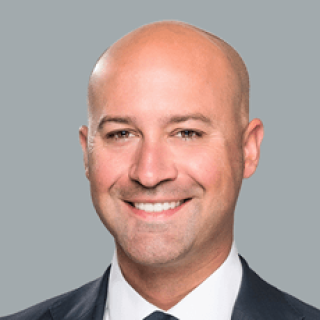Blog
D&O Game Changer: Delaware Approves Using Captives for D&O Insurance
December 12, 2022 Update: Woodruff Sawyer’s client Meta (which owns properties like Facebook and Instagram), is the first Delaware-incorporated company to put Side A in a captive. To ensure complete coverage for its Ds and Os, Woodruff Sawyer also placed a Side A “Laser DIC” policy for Meta. Janaize Markland, Meta’s director of business risk and insurance, and Woodruff Sawyer Partner Lauri Floresca discuss this groundbreaking structure along with Nick Troxell of Allianz Global Corporate & Specialty in a recent podcast for Captive Intelligence. Listen to the podcast for their insights.
Big News. On January 27, 2022, the Delaware Legislature passed legislation designed to make captive insurance a viable alternative to traditional D&O insurance. This new development should mean that, over time, the cost of D&O insurance should decline.
For more insight, watch the recording of our webinar in which Woodruff Sawyer experts discuss this legislation.

The following is a set of FAQs designed to help D&O insurance buyers and beneficiaries understand (1) why there was a problem, (2) what the Delaware legislature did to address the problem, (3) the impact of the change in Delaware law on traditional D&O insurance, and (4) for whom pursuing a captive strategy makes sense.
I. What Was the Problem?
A corporation with a small balance sheet will obviously want to purchase D&O insurance. But why are corporations with hefty balance sheets buying D&O insurance? Can’t they just self-fund any losses?
Some companies with large balance sheets choose to forgo the “balance sheet” protection part of D&O insurance (often referred to as Side B/C coverage) and self-fund any losses they can legally indemnify. In most cases, there is no need to go to the trouble of setting up an indemnification trust, a captive, or anything else. If something is indemnifiable, which is the case for solvent corporations when it comes to defense costs for all claims brought in the US as well as the settlement of securities class action lawsuits, the corporation can just pay these costs directly as incurred.
However, recall that under Delaware General Corporation Law (DGCL) Section 145(b), corporations are not permitted to provide indemnification for breach of fiduciary duty suits brought derivatively. This explains the popularity of “Side A” D&O insurance even for very large, well-funded companies. Side A D&O insurance provides first dollar coverage when something is insurable but not indemnifiable, such as the settlement of derivative suit claims.
What is a captive?
A captive is a licensed insurance company that provides insurance for designated risks to its corporate parent company. Companies like financing retained risk with captives because of potential benefits such as increased control over the cost of insurance, insulation from market volatility, access to reinsurance markets, and tax efficiency.
Given the high cost of D&O insurance, why weren’t we already using captives for D&O insurance?
The cost of using a captive for D&O insurance was prohibitive for two reasons: (1) onerous capital requirements, and (2) the concern that a captive would not be allowed to respond on behalf of directors and officers to claims that are not indemnifiable as a matter of Delaware corporate law.
Why are D&O captive capital requirements so onerous?
Put simply, captives work best for high-frequency, low-severity risks. When there is a plethora of data for a type of risk, for example workers’ compensation losses, actuaries can model future losses with a high degree of certainty. This is important because a captive must hold adequate capital to backstop the limit of insurance being provided to the parent company. The relative lack of predictability and the potential for outsized losses inherent in D&O claims means that the capital required for a D&O captive is likely to be substantial. Compared to the cost of D&O insurance, even during the current hard market, funding a captive is likely to be burdensome.
Why did everyone think that even if you used a captive, you still had to buy Side A insurance from a traditional commercial insurance carrier?
As noted above, DGCL Section 145(b) exposes directors and officers to the potential of personally paying to settle derivative suits. Thankfully, DGCL Section 145(g) explicitly contemplates using D&O insurance to cover directors and officers against liability “whether or not the corporation would have the power to indemnify such person against such liability under this section.”
What the original text of DGCL Section 145(g) did not do, however, was contemplate the use of captive insurance. While captive insurance is insurance, the concern is that using a parent company’s captive instead of buying commercial insurance arguably looks like the corporation is attempting to fund non-indemnifiable losses since it is the corporation itself that funds the captive. That led most experts to advise that corporations using a captive to protect their directors and officers should also continue to purchase Side A insurance to be certain directors and officers have coverage for non-indemnifiable claims.
II. What Did the Delaware Legislature Do?
What did the Delaware legislature do to make captives a more viable option to replace traditional D&O insurance?
The change just passed by the Delaware legislature amends DGCL Section 145(g) to clarify, that as the term is used by the DGCL, the definition of insurance includes captives. This makes captives a viable alternative to traditional D&O insurance, even Side A D&O insurance, for claims that are not directly indemnifiable by the corporation due to DGCL Section 145(b).
Can a captive provide identical coverage that commercial insurance carriers provide?
As always with D&O insurance, the devil is in the details, and it will take time to understand the details of the change in the DGCL. One observation is that, particularly with respect to independent directors, some of the most advanced D&O insurance policies available have no conduct exclusions of any kind for independent directors.
By contrast, DGCL 145(g) mandates some exclusions from coverage. Some may not consider these exclusions to be problematic, such as the exclusions for “any claim made against any person arising out of, based upon or attributable . . . to or a knowing violation of law by such person, if . . . established by a final, non-appealable adjudication in the underlying proceeding in respect of such claim.”
This will be a business decision for boards to consider. Boards will want to take into consideration how to best attract talented independent directors to their board given the high frequency and severity of claims brought against directors and officers, including very expensive but largely frivolous claims.
III. What will be the impact of the change in the DGCL on traditional D&O insurance?
Are insurance carriers going to be upset about this change?
No. The reason the cost of D&O insurance has gone up so dramatically is that losses have been outpacing premiums for years. The volatile, high-severity nature of outcomes for D&O claims makes underwriting a particularly difficult challenge—especially for the biggest companies. Carriers have long felt that providing D&O insurance for some companies is much like providing fire insurance for mansion-size cabins in the middle of a forest experiencing drought. Smart carriers will welcome the opportunity the change in Delaware law provides to partner with their insureds in more creative ways.
Will the cost of D&O insurance decline?
Yes, the cost of D&O insurance should decline over time. Insurance market conditions are impacted by both the trading market and the technical underwriting results. On the technical side, one factor leading to the increased price of D&O insurance has been huge losses experienced by carriers, leading to poor underwriting results and the need for increased premiums. The trading market has experienced unprecedented demand for the D&O insurance product. There is always a large cohort of mature public companies that seek D&O insurance each year. Adding to that demand more recently has been an unusually large numbers of new seekers of public company D&O insurance resulting from traditional operating company IPOs, direct listings, SPAC IPOs, and companies going public through de-SPAC transactions. Economics 101 tells us that when demand goes up and supply—insurance capital—is relatively inelastic, the cost of the product will go up. The emergence of captives should ease the demand somewhat, so all things being equal DGCL 145(g) should bring down the cost of D&O insurance over time.
IV. Who Should Pursue a Captive Strategy as an Alternative to Traditional D&O Insurance?
What type of companies are the best candidates to use a captive as an alternative to D&O insurance?
The primary qualifications for financing D&O in a captive are (1) a strong corporate balance sheet, and (2) the desire to retain significant, unpredictable D&O risk. Corporations using their captive to cover D&O risk will need to pay the captive an annual premium to cover actuarial expectations for D&O claims. These corporations will also be required to deposit sufficient risk capital into the captive to satisfy regulatory capital requirements and cover claims beyond the actuaries’ estimates up to the full policy limit.
When factoring in the captive premium, the opportunity cost of the risk capital invested in the captive and the captive’s operating costs (captive management, actuaries, accountants), the captive option is likely to be more expensive and operationally onerous compared to simply buying traditional D&O insurance. A careful cost-benefit analysis may show that commercial D&O insurance is still a good deal.
Given that cost of setting up a captive and the work involved, companies that already have a captive in place are the best candidates to consider using a captive as an alternative to D&O insurance.
What type of companies are especially unlikely to use a captive for D&O Insurance?
Companies that are not financially stable are unlikely to be good candidates to use a captive.
First, a company with a weak balance sheet is unlikely to have the cash or credit facilities available to fund a captive. In addition, it is not clear that a bankruptcy court would refrain from seizing the captive’s assets, which would adversely affect the ability of the captive to pay a claim brought against a director or officer. If this happened, the company’s directors and officers would have no protection against claims brought against them. By contrast, classic Side A D&O insurance is specifically designed to be able to respond on behalf of directors and officers when a company is in bankruptcy and can no longer indemnify its directors and officers.
Companies for whom investing millions of dollars of risk capital is painful—either because of less than robust balance sheets or because capital is better utilized for other initiatives like acquisitions or capital investment—should also avoid D&O captive strategies.
Organizations looking to use a captive as a short-term antidote to expensive D&O insurance will likely be frustrated. Standing up a D&O-focused captive or adding D&O to an existing captive will require companies to maintain significant regulatory capital for years, not to mention material time and attention from executives. Captives make the most sense for companies that are committed to this strategy. (For this reason, SPACs—which only exist in their original form for two years or less—are not good candidates to use a captive instead of traditional D&O insurance.)
Over time, the change in DGCL Section 145(g) might lead to captive solution innovations beyond a traditional single parent structure for D&O risks, potentially including group captives. Group captives tend to be most appropriate for smaller middle market companies. However, group captives still require considerable capital. Most importantly, group captive solutions typically involve levels of risk sharing among members—something many independent directors might find deeply uncomfortable. Any consideration of D&O offerings from existing captives should be carefully reviewed to understand the fine print and appropriateness of fit to solve the underlying problem.
I have an existing captive. Can I just put my D&O risk into that?
Likely yes, but it is not clear that this will be the best way to go. Directors and officers may be wary of being asked to pivot from having dedicated protection through traditional D&O insurance to facing the risk of their coverage being diluted by workers compensation or other claims covered by a company’s captive. If a big D&O claim has to be paid the same year the captive has to pay other claims, it will be too late to back-fill with traditional D&O insurance.
How long does it take to set up a captive?
From soup to nuts, you are typically looking at 45 to 90 days. It is likely that the first few captives for D&O insurance that include coverage for non-indemnifiable loss will take longer as captive domiciles and regulators need to come up to speed on putting D&O risk in a captive. You will also want to build additional time into your planning process for things like getting management and board alignment on whether to pivot to using a captive to replace some or all of your traditional D&O insurance.
What would be a sensible strategy to explore using a captive for my D&O risk?
Rather than, in one year, completely pivoting from a traditional D&O insurance program to a captive, consider setting up a dedicated captive to address part of your risk. This allows everyone to get used to the idea and work out the inevitable kinks in the system before fully committing all the directors’ and officers’ protection to a captive structure.
What are some non-obvious risks my board should consider as it considers replacing traditional D&O insurance with a captive?
See above for comments on attracting and retaining top talent in a competitive market for directors and officers.
When a captive pays a D&O insurance claim, there could be questions of timing, optics, and potentially mischief. Amended DGCL Section 145(g) requires that if notice is required to be given to shareholders of the settlement of a derivative suit, a condition precedent to any payment by a captive is that shareholders be given notice that the payment is being made “under such [captive] insurance in connection with such dismissal or compromise.”
Maybe this will be fine. On the other hand, large settlements rarely leave shareholders feeling charitable towards the directors and officers on whose behalf the settlements are being made. DGCL Section 145(g)’s notification requirement may imply to shareholders that they have the ability to object to the payments—even though there is nothing in the section about objections. The timing of the notification may lead some shareholders to feel that since the claims are being paid by the corporate parent’s captive—which was funded by corporate proceeds—the shareholders are being harmed. One expects that there will be many articles written that will fail to mention that Delaware law explicitly authorized this funding mechanism and will instead attempt to shame directors and officers for “taking advantage” of shareholders.
When D&O insurance pays a claim, there is no shareholder notification process, and certainly no one is writing articles sympathizing with the D&O insurance carriers who paid the claim.
What are good next steps?
Before running too far down the captive path, consider having an informed conversation with your board of directors to test their appetite. D&O insurance prices are already starting to soften, creating a dynamic where your board may not think the squeeze is worth the juice.
You will also want to conduct a feasibility study, the normal first step taken when considering a captive. A feasibility study is a somewhat involved process that typically includes things like a review of the organization’s ability to retain risk, actuarial modeling of the D&O exposure, several years of pro-forma captive financials and a comprehensive financial comparison to traditional insurance accounting for the opportunity cost of capital trapped in the captive.
Download this Blog as a PDF >>
Woodruff Whiteboard Breakdowns: D&O Captives
Authors
Table of Contents













